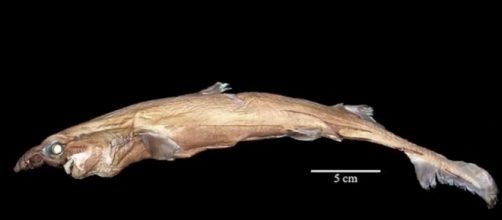With all of the exciting footage featured on this week's shark week, it is only fitting that the science world announces an exciting piece of research of their own: the glow in the dark shark. Scientifically named the Etmopterus lailae, this shark gained its nickname due to its illuminated appearance.
This shark is the member of the Lanternshark family, a group of sharks who are typically smaller and size and obtain bioluminescent qualities. Bioluminescence is a chemical reaction that gives a living organism the ability to emit light. Some of its functions include attracting prey and even scaring away predators.
What makes this shark so special?
While the announcement of the new shark was just made to the scientific community, this shark was actually found 17 years ago off 1,000 feet below sea level, off the coast of the Northwestern Hawaiian Islands. Unlike other Lanternsharks in its family, this shark has a particularly large snout and a distinctive head shape. Since the habitat these sharks live in naturally has no light source, the shark uses its large nose to sniff out food sources. This Species of shark has a different number of vertebrae and fewer teeth than other sharks. The Etmopterus lailae also has unique markings on its belly and tail that separates it from other species.
Stephen M. Kajiura, Ph.D., a scientist at Florida Atlantic University is among the team of Scientists who have been working on the identification of this species.
Kajiura made the discovery while he was still in graduate school at the University of Hawaii. In order to correctly identify the species, the scientists had to take painstaking measurements and conduct thorough research on the comparisons between this species and other species that have already been discovered.
Exciting discoveries
Some scientists and researchers suggest that "less than 10 percent of the life-forms in the world's oceans has been identified," according to National Geographic.
Despite years of research development and efforts, scientists and researchers have yet to be able to make considerable headway in specimen identification.
A large part of the reason behind this is because of many species, especially marine ones, are deep enough in the shadows to easily slip by researchers.
The announcement of the Etmopterus lailae shows non-scientists just how difficult and long it can take to properly identify a new species. The discovery of this shark, like the identification of any new species, reminds us how new scientific findings are truly endless.


